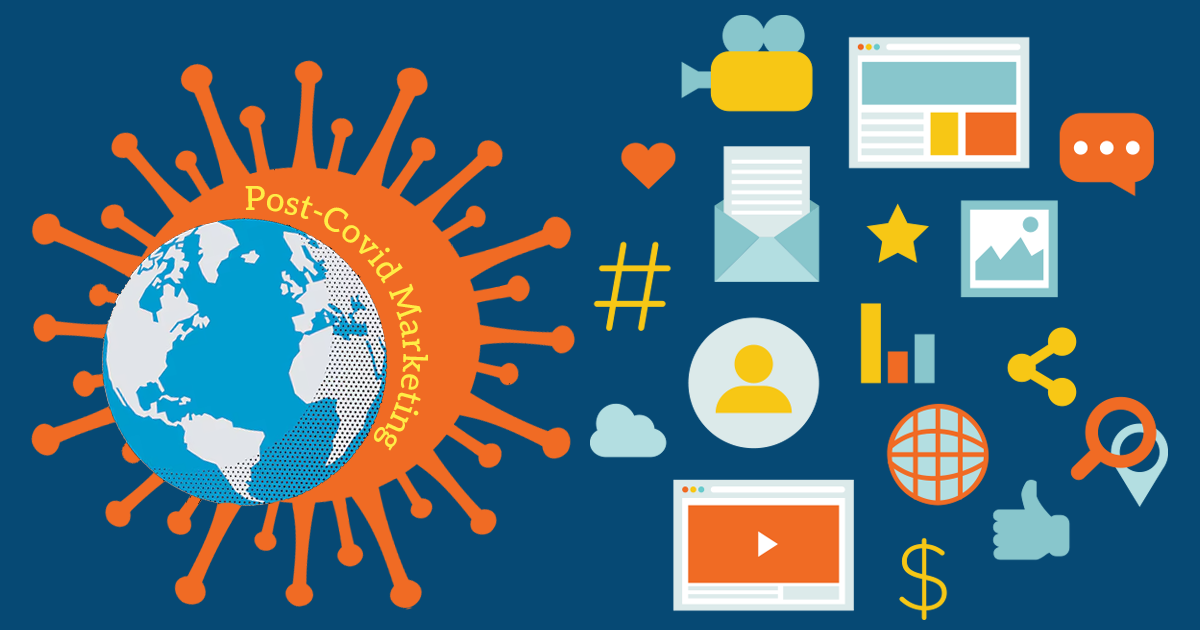How the Pandemic Transformed Marketing Strategies

Global market leaders continue to adapt and change their strategies as the world begins to recover from the economic and health crisis of the past few years. An integral aspect to consider amidst this evolution is the transformation of marketing practices. Transformed Marketing automation strategies have especially garnered serious attention in the past few years.
Since marketing is one area that is more susceptible to external factors and customer feedback, it is worthwhile to decipher how marketing agencies have adapted and refined their tactics.
We’re keen to explore how growth marketing strategies are shaping up their businesses in a world that has escaped the health scare of the past four years but continues to experience a period of significant transition due to changing socio-economic trends.
Let’s delve into some notable trends to understand the shifting landscape:
- Foot traffic in New York City has declined by 33% compared to 2019.
- The ten major U.S. cities have maintained an office occupancy rate of around 50% since January 2023.
You can also consider the following marketing-specific trends and see how profound said change is:
- WordStream reports that 63% of businesses have increased their digital marketing budgets in the past few years.
- With a recognition of the importance of marketing for their businesses, 94% of small business owners plan to increase their marketing spending in 2024
- Approximately half of all marketing teams restructured during the past 12 months.
Considering the above statistics, we can see how businesses today are experiencing an unprecedented period of change. We have identified a few common trends by examining the marketing strategies that have been altered in different industries. But let us first consider how the pandemic impacted various marketing strategies for organizations worldwide.
Making Culture Your Company’s Top Priority
Whether adopting a total return to the office, a hybrid work model, or our favorite – embracing the joys of going (or remaining) fully remote, one thing needs to stay at center stage: your company’s culture.
It is essential to ensure that your business processes and daily operations align with your values and culture. A lack of harmony between these aspects can leave your employees frustrated and unproductive. With businesses still grappling with a rise in remote and hybrid work trends, “quiet quitting,” and economic uncertainty, we can look at how marketing leaders adapt and stay on top of their game.
“We are beginning to think about returning to the office again but also adopting a ‘hybrid model’ in which teams designate their in-office days for collaborative work and WFH days for work that requires more focus and concentration.
We understand that some days require more concentration and independent focus than others, and everyone works differently. If anything, the pandemic has highlighted this. Now that we have become accustomed to remote working, it might be an unsettling transition for some.
We won’t be ditching the office; it’s too crucial for the physical connections we deem essential to our business – like culture and knowledge sharing. Plus, we want to welcome clients to use our office as a getaway when thinking about their business plans and a healthy escape from the distractions of their environment.
Having said this, companies must prioritize cultivating company culture—now more than ever—and creating office spaces that people want to visit.”
– Alan Spurgeon, Founder & Director of Hedgehog Digital
Stay Flexible with Hybrid Work Schedules
The past few years have inspired a tremendous shift in workers’ perceptions and how they approach work. This change is particularly pronounced within the younger cohorts – our future business leaders and trendsetters. The traditional conceptions of how a workplace is supposed to look no longer stand valid. Therefore, it is pertinent for business and marketing leaders to adjust accordingly and make the most out of emerging trends. The beauty of this shift lies in the opportunities it presents. With a hybrid or remote strategy, businesses can explore new growth channels, such as globalized hiring, discovering new markets, new perspectives and approaches to business, etc.
For business ladders, it could be counterproductive to stand against the whirlwind by forcing old strategies on a rapidly evolving workforce.
“TALK Agency is a full-stack marketing agency that services clients around Australia and the US. Half of our workforce is based out of the HQ office in Australia, while the other half works remotely from Brazil and the UK. This puts us in a unique position to have had systems and processes in place for successful remote working since the agency’s inception.
– Cooper Jitts, CEO & Founder of TALK Agency
Remember that there is no “silver bullet” solution to staffing. While some companies have decided to return to a full-time office setting for their employees, others have decided to take a more prudent approach. By maintaining a balance between in-person office work and remote work, many companies are trying to find the best middle ground.
On the contrary, you also have the example of Microsoft fully embracing remote work.
Hybrid work represents the most significant shift to how we work in our generation — and it’ll require a new operating model, spanning people, places, and processes.”
- Satya Nadella, CEO, Microsoft
Data and Customer-driven Marketing Strategy
Make decisions based on data, not dogma.
We have found that many businesses and marketing leaders have decided to take the road less traveled and experiment with staffing strategies that were previously not used in their organizations. The only caveat with this thinking line is understanding your industry-specific and multichannel marketing trends.
The strategies that may work for the finance department may not work in the marketing department. Some functional areas, such as design and manufacturing, require more in-person interactions than other “remote-friendly” areas, such as IT and customer service.
Similar to these intra-business trends are the inter-business trends. Different industries have different levels of remote work suitability, so it is best to consider these factors before making any binding decision. Do not let your pre-existing organizational biases prevent you from exploring new avenues of growth and innovation. After all, as the marketing head of your business, you are expected to be at the forefront of novel thinking and staying on top of the external trends.
“The pandemic has fast-tracked online marketing due to an increase in the population using online methods for communication and finding new information. As a result, we have dedicated time to tracking trends and finding new and innovative ways of delivering messages using online mediums. Furthermore, our team has paid close attention to optimum times to deliver content online, and we have jumped into our target audience’s shoes.. The results are astounding if you spend time on market research, and being the first on new popular sites and areas has proven to be the key in benefiting from the surge in online activity.”
– James Dyble, Managing Director of Global Sound Group
Lead By Example, Even Financially
We have often witnessed companies being forced to take drastic steps to cut costs and improve their operational margins. With the rise in remote and hybrid work, the obvious choice for many companies was to cut down on office rentals, equipment, and other fixed costs associated with having an office infrastructure.
However, a few decided to take the high road. What did our next leaders decide would be the best area to cut?
In an increasing uncertainty and economic downturn, many business leaders lead by example by cutting their own paychecks before expecting their employees to do so. A notable example of this is Eric Yuan, the CEO and founder of Zoom.
In an email to Zoom employees, Mr. Yuan announced that he would take a 98% cut in his annual paycheck for 2023.
“As the CEO and founder of Zoom, I am accountable for these mistakes and the actions we take today – and I want to show accountability not just in words but in my own actions.”
– Eric Yuan, CEO, Zoom
While the company still laid off about 1300 employees, Eic Yuan assumed responsibility for misjudging the market and not making preemptive decisions to save the company from eventually taking such drastic measures.
The unparalleled integrity shown by Eric Yuan makes us wonder how much worse it would have been for Zoom had he not taken it upon himself to pull the company from such a dire situation.
Have empathy for your employees
Understand that the aspects that appeal to you – flexibility, spending more time with family, etc.- are likely to appeal to your employees. It is better to talk to your employees to develop a solution that respects people’s needs and wants and doesn’t negatively impact your business’s bottom line.
“Even when I worked in an office, I often brought work home. When I started working remotely, it was just a recipe for disaster. Over time, I’ve found two things to be very important. That is a bit cliché; everybody says this, but it’s true. Rest is crucial. And time off is very important.”
Goncalo Silva, CTO, Doist
We understand that it can be challenging to bring about change. If you’d like help from experts in managing remote workforces and streamlining processes so you can continue to adapt and grow your business, we invite you to explore our services. We can even take on your routine tasks while saving you time and money, so shoot us your questions.



